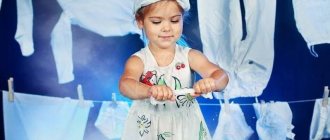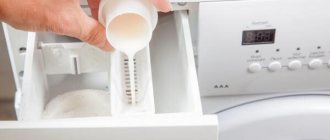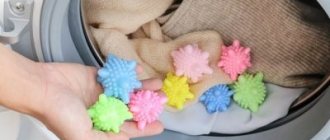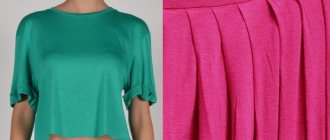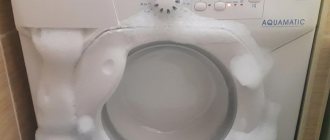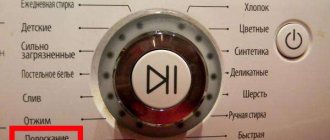The automatic washing machine learned to spin clothes back in the 40s of the twentieth century. This made the washing process much easier, because dealing with heavy bedspreads and duvet covers required a lot of effort. Today such a function exists in any SMA. Many consider it as an automatic operation of the device, which is mandatory for washing programs. This is a big misconception, since the regime’s capabilities in terms of application are much wider. To use it profitably, you need to at least know what the spin icon on a washing machine looks like, and at the most, understand all the nuances of its use.
How to pronounce the word spin?
In the word “spin,” the emphasis should be on the syllable with the letter I—spin. We hope that now you will not have any questions about how to spell the word otzhim, where to put the emphasis, what kind of stress, or where the emphasis should be in the word otzhim in order to pronounce it correctly.
Interesting materials:
What is the name for lard through a meat grinder? What is the name of Twisted Garlic Lard? What is the name of the largest library in Asia? What is the name of the largest library in Kazakhstan? What is the name of the largest desert in Eurasia? What is the name of the largest fish in the ocean? What is the name of the largest star that is larger than the sun? What is the name of the oldest Russian chronicle? What is the southernmost point called? What is the smallest unit called?
What is the spin sign?
In almost any automatic machine, this icon is indicated by a picture with a curled spiral, reminiscent of a snail’s house. Manufacturers of washing machines depict the “snail” in different ways (the number of curls may vary), which, however, is not important for the mode itself.
Some manufacturers, for example] Beko[/anchor], , Zanussi, for convenience, often designate a function on the control panel with a word rather than an icon (“snail”).
But there are also combined options: a picture plus an inscription.
In many washing machines, the mode is often included as a separate option. Sometimes it is combined with rinsing or draining. This is necessary so that the user can simply wring out things, for example, after regular hand washing.
How to spin clothes without a rinse cycle, if a separate option is not provided, you can learn from this video
The number of drum revolutions depends on the SMA model. The minimum permissible number is 400 rpm, the maximum is 1800 rpm. The user can also set them independently, using the handle or button (depending on the model) for selecting the speed on the control panel.
The faster the drum rotates, the drier the laundry comes out. But in practice, maximum speed is often useless. For most types of items, 800-1200 rpm is sufficient.
Frequent use of high speeds negatively affects the efficiency of the component mechanisms of the device and contributes to their rapid wear. The risk of damaging things is also high. Therefore, the washing machine automatically limits the selection of the number of revolutions if the maximum permissible number for a particular program is exceeded. Such restrictions exist in many washing machines, for example “Ariston” and “Indesite”, in the “Wool”, “Synthetics” and “Silk” modes.
Washing rules
- Be sure to sort your laundry by fabric type and color. It is convenient to do this in advance by dividing the dirty laundry basket into compartments (plastic dividers are sold in hardware stores). This way you will save time and will be spared the need to dig through dirty laundry.
- Be careful when choosing a detergent . It is optimal to have in your home not only general-purpose powder, but also detergents for wool and silk, sports and membrane fabrics, as well as bleach. It is enough to turn black items inside out before washing, as modern dyes do not fade so easily.
- Try to choose the right washing mode , temperature and spin speed. As already mentioned, it is necessary to focus on the labels that clothing manufacturers always supply their products with, but if such information is not available, you can use the recommendations above.
- Use fabric softener - it will make your towels soft and your bed linen can be ironed easily. If you use specialized products when washing wool or silk, rinse aid is usually not used.
- Keep in mind: if you wash only at low temperatures, the machine may “bloom” , that is, black mold will appear in it, and a putrid smell will appear, which will be transmitted to the laundry. To prevent this from happening, thoroughly dry the detergent tray, wipe the rubber gaskets between the drum door and the machine body, and wash at high temperature at least once a month.
Disabling the spin option
Many items (made of wool, silk and other delicate fabrics) may be prohibited from twisting. This will be indicated by a special sign on the product label. It is not at all necessary to refuse to machine wash such clothes if there is a picture in the washing machine in the form of a crossed out spiral (or the number “0” in the list of spin speed options).
This icon indicates the “no spin” function and is provided by many SMA manufacturers. What does the washer do if you disable this option? First of all, it stops spinning the laundry. But each manufacturer has its own “but”.
In Electrolux machines, this option means the following: all stages of spinning clothes are canceled and replaced with one drain, preventing the formation of deep folds in the laundry. In this case, more water is used during rinsing than usual.
In Bosch SMA, the use of this option only involves canceling the final stage of spinning the laundry. After the last rinse there is no drainage, so the clothes remain in the water. The function is indicated not by a crossed out snail, but by a basin.
The “spin” sign on washing machines is simple and universal in general, but it is used for each specific SMA model with an individual meaning. This is why it is so important to read the operating instructions for your equipment. After all, it is designed not only to help eliminate the problem, but also to improve the quality of washing, using all its capabilities as efficiently as possible.
What factors determine the washing time in a washing machine?
Let's look at this issue using a practical example (if your washing machine has a digital time display, then you can easily experiment without turning on the machine).
So, let’s turn on the “Cotton” mode - it is available on most models (further the indicators will be given for the “VEKO” washing machine; for others they will not be much different).
What do we see?
- total time: 1h.57m;
- temperature: 60°C;
- spin: 1000 rpm.
Let's set the temperature to 90 oC. We see that the process time has increased to 2h.26m. At t=40 oC the time will decrease to 1h.37m, at t=30oC – to 1h.32m.
Let's change the spin parameters. What do we see? When changing the number of revolutions, the total time does not change; it decreases only if the spin is turned off altogether.
Let's turn on the additional "Soak" function. The total time increased from 1.57 to 2.14.
Thus, using the example of one mode, we saw that its duration strongly depends on the heating temperature of the water, increases with the inclusion of the additional “Soaking” function and is absolutely independent of the number of revolutions during the spin cycle.
Of course, in machines from other manufacturers, the spin time may increase with increasing speed, but 2-5 minutes will not save anyone. In addition, it should be mentioned that the duration of the wash does not depend on the load on the drum; in some new models, the weight of the loaded laundry affects the consumption of water and detergent.
In the “Cotton” mode, it is recommended to wash cotton, linen and similar fabrics, or, more simply, fabrics that can be washed in very hot water and wring out well. When turning on the “Soak” function, do not forget to pour the powder into the appropriate powder section (read the instructions for your washing machine).
Let's look at other basic washing modes that are available on almost all machines.
“Cotton Eco” or similar – lasts about 3 hours depending on the model
As the manufacturers say, in this mode the machine washes very carefully and carefully, with preliminary soaking in warm water and thorough rinsing.. The “baby underwear” mode has approximately the same characteristics - after all, children’s clothes should be washed carefully and carefully, every mother knows this
The “children’s underwear” mode has approximately the same characteristics - after all, children’s clothes should be washed carefully and carefully, every mother knows this.
By the way, these modes include a pre-washing or soaking function, and for this you need to specifically pour the powder into the appropriate section of the powder tray, as mentioned above. If you don’t do this, then for the first half hour your things will simply be rinsed in warm water.
Let's look at other most common operating modes of modern widespread washing machines:
- Synthetic fabrics - lasts 1.5-2 hours, temperature limit is 40°C, and you cannot add the temperature manually, as in the “Cotton” mode;
- Wool or silk - duration about 50 minutes, spin limit - 600 rpm;
- Hand wash – lasts about an hour, heating limit – up to 30°C, spin – 600 rpm.
There are some other modes depending on the model and brand, for example, “Mix”, “Shoes”, “Curtains”, “Jeans” - each manufacturer tries to make their product the best and most attractive, endowing it with “irreplaceable” functions.
Class Selection Council
- Housewives who prefer to dry their things in the fresh air (on the balcony or in the courtyard of their house) and do not intend to change their preferences should not buy a high-class machine at all; a machine with a low spin ratio will be enough for them. This will help housewives not to overpay for unnecessary characteristics of the device.
- Since things become several times heavier after washing due to water, it will be quite difficult to remove them from the washing machine and hang them up. If you have any contraindications to physical activity, then you should not simply waste your health and buy a model of a machine with a higher class.
- In addition to the spin class, you should pay special attention to the washing class - this characteristic affects how well the machine will wash clothes. Sometimes it happens that these indicators do not coincide, and in the end it turns out that the laundry will be well wrung out, but not washed at all.
This is interesting! How to clean a washing machine with citric acid
When choosing a machine, the main thing is to calculate all the indicators and characteristics of the device you choose. It is important to remember that this equipment will serve you for several years, so you should put especially great effort into its selection and purchase.
Intelligent programs
Modern washing machines, even budget ones, provide owners with additional intelligent functions, including:
- Foam control . The more foam generated during washing, the more detergent will remain on the fibers of the fabric. Therefore, some modern models control the amount of foam formed. If there is too much of it, then a special mini-pump comes into play and pumps out the excess.
- Water level control . The artificial intelligence of the machine determines the weight, dirtiness and dimensions of the loaded laundry and calculates the required volume of water and washing time.
- A program that monitors the clarity of the water to determine whether any remaining detergent has been rinsed out properly.
- Eco-bubble and similar. This technology uses air bubbles for washing. To form them, water is mixed with powder and supplied to a special generator located under the drum. The bubbles that appear penetrate through the holes in the drum. Owners of washing machines with this function note the high quality of washing and careful treatment of fabrics, which are not damaged during bubble treatment.
- Delayed start function . Many modern models have the ability to set a wash start timer within 24 hours.
- Possibility of control via NFC module . Using this function, you can remotely interact with the machine.
- Autodosing of powder . The detergent is poured into a special large-volume receiver. Depending on the degree of contamination and weight of the laundry, the machine itself measures the required amount of powder.
How to iron and dry clothes after washing
Wäschetrockner, BaWa 004
It is worth noting that gentle washing alone is not enough to preserve the original appearance of products. It is recommended to dry and iron clothes properly.
Tips for drying delicate materials:
- if you did not use a spinner, hang things on hangers over the bathtub and let the water drain;
- Never dry wet items on a line in a bent state or attach them with clothespins;
- either hang the product on hangers or lay it out on a horizontal, preferably mesh, surface;
- to speed up the process, do not place clothes on a radiator or other sources of artificial heat;
- Do not leave light-colored laundry to dry in the sun; try to hang the items in the shade;
- Place the guipure and lace on a flat horizontal surface and cover with absorbent material.
Tips for ironing delicate fabrics:
- for processing, use a high-quality iron with a clean and smooth sole;
- first, try ironing an inconspicuous area of the material with a slightly warm iron, see if the treated area is deformed;
- iron wool at a maximum of 180 degrees only through slightly damp cotton fabric;
- Either do not iron synthetics at all, or set the iron temperature to 110 to 130 degrees, and process only through cotton fabric;
- Iron the organza through a thick sheet of paper at a temperature of 100 to 110 degrees;
- iron silk clothes from the inside out slightly damp, setting the iron temperature to a maximum of 160 degrees; if the material is dry, to prevent streaks from appearing, do not spray the fabric, but moisten it by wrapping it in a damp towel;
- It is better not to iron velvet items, but to treat them with steam from a steam generator or by hanging the item over a bathtub with hot water;
- products made of nylon and elastane cannot be ironed;
If you are unsure of the type and origin of the material, look at the label on the product. The crossed out iron icon means that ironing clothes is prohibited, and the number of dots in the center indicates the degree of heating of the device.


